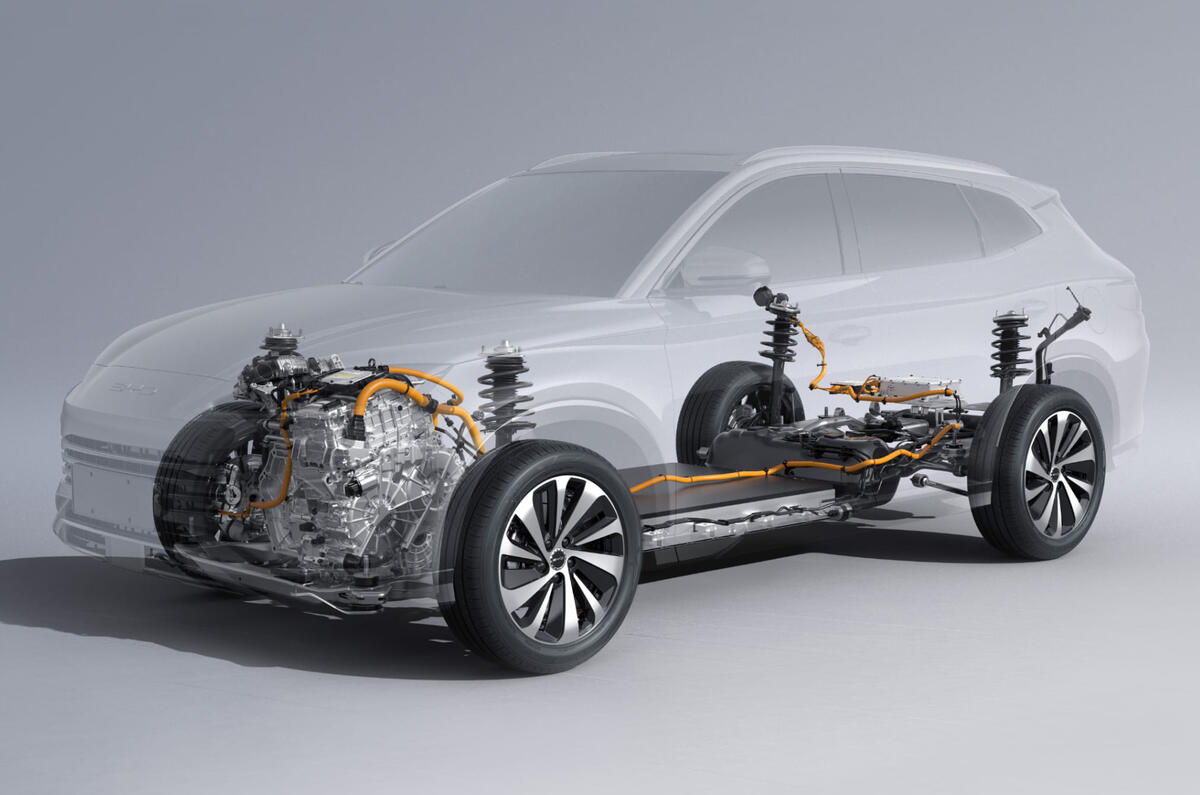BYD is priming a range of new plug-in hybrids with some 200km (124 miles) of electric-only range and the ability to rapid-charge at speeds of more than 150kW.
Due within “the next one to two years”, this new generation of PHEVs from the Chinese giant (badged DM-i) will have substantially greater capacity to operate as EVs than their rivals.
At present, the longest electric range of any PHEV on the UK market is 88 miles, offered by the Volkswagen Golf eHybrid, while the best from BYD is 77 miles, offered by the Seal U – which can be charged at only 18kW.
“Our target is really to have people in daily use using the EV [mode], but then if they want long distance, given a chance to charge, they have the freedom to go to anything,” said BYD’s executive vice-president, Stella Li.
The current DM-i system combines BYD's Blade Battery technology with its Xiaoyun petrol engine, which was designed specifically for PHEV use and is claimed to have world-leading thermal efficiency.
BYD's special advisor for Europe, Alfredo Altavilla, explained that the development is coming as “PHEV has become the new battleground” for manufacturers, “because everybody is shooting for a revision of the so-called green deal that will open up markets also beyond 2035”.
Altavilla believes the company is best positioned to capitalise on the widespread relaxation of EV legislation because “we truly don't see anybody having technology close to the DM-i”.
“If you have just 35-45km [22-28 miles] of range as an EV, you're fundamentally an internal combustion engine with a plug,” he said. “That's the reason why a lot of manufacturers are now trying to come closer to our plug-in hybrid technology with the range-extender.”
Those manufacturers include Ford, Leapmotor, Lotus and Volkswagen. Increasingly popular in China, range-extender (REx) cars are essentially EVs with an on-board energy generator in the form of a small petrol combustion engine.
Leapmotor’s overseas boss recently told Autocar that REx cars are a “good interim solution” for Europe and better than PHEVs because, as the propulsion is always handled by an electric motor, “the engine is always operating in the most efficient way”.
Altavilla countered that PHEVs are “definitely superior” than REx cars because “you can have three different ways of using the car; it's your decision, depending on how much power you need from the engine, [whereas] the REx is always behaving in one way”.
The UK is expected to receive the Seal 06 saloon and estate as its second and third BYD PHEV models in the coming months.




Add your comment